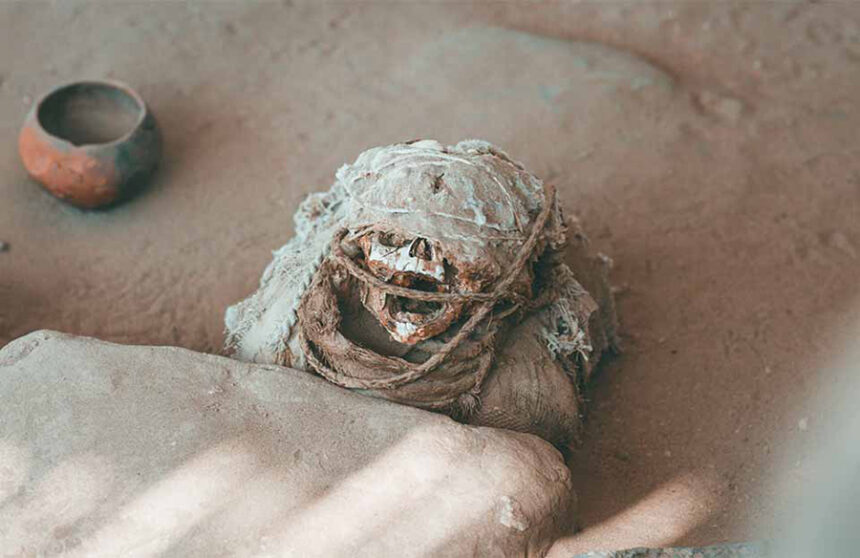Archaeologists in Peru have made a groundbreaking discovery in the Carabayllo district: a nearly 1,000-year-old pre-Hispanic cemetery containing the remains of infants and children. The excavation, prompted by workers installing natural gas pipelines, uncovered six bodies, including two neonates and four minors, which are now slated for scientific examination.
Unexpected Find
Located on the outskirts of Lima, Peru, the site gained attention during excavations for natural gas pipelines. The workers stumbled upon the ancient cemetery, prompting them to alert specialists for further investigation. The discovery, made on September 22, 2023, revealed not only human remains but also well-preserved ceramics and vessels near an illegal water pipeline at the site.
Child Bundles and Ceremonial Items
According to reports, the bodies were found bundled in fabric alongside household items such as vessels, pumpkin materials, and wooden tools. Archaeologists estimate that the remains date back to between 1100 to 1450 AD, indicating an age of approximately 800 to 1,000 years. The sandy and dry terrain of the area has played a crucial role in preserving the site, including the soft tissues of the remains, a rare occurrence in archaeological findings.
Focus on Children
Of particular interest is the composition of the discovered bodies, predominantly belonging to children, including two infants and four minors. Archaeologists hypothesize that the site served as a specialized cemetery for minors. The bodies were wrapped in materials like cotton, pacae leaves, and decorated fabrics, with some positioned in fetal and lotus flower shapes.
Insights into Ancient Rituals
The artifacts found alongside the bodies provide valuable insights into the funeral practices of the time, offering glimpses into the lives and rituals of the deceased’s relatives. This discovery underscores the historical continuity of the region, particularly in the valleys of Rímac, Chillón, and Lurín, while also hinting at the potential for further archaeological revelations in Peru.
Scientific Analysis and Future Discoveries
Following the initial excavation, the unearthed bodies will undergo extensive scientific analysis. This analysis aims to unravel the relationships among the remains and shed light on the causes of their deaths, adding more layers to the historical narrative of Peru. The discovery of this ancient child cemetery marks a significant contribution to Peru’s rich archaeological heritage and opens doors to further exploration and understanding of the region’s past.



Leave a Reply